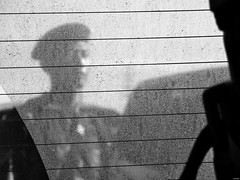Yes, the 50 lux - at least a good one - is quite possibly the best lens I've ever used, offering the isolation and sharpness of a good telephoto at a normal-ish field of view. The comparable Voigtlander 50/1.5 Nokton ASPH is pretty good too, considering it's 1/10th the price - and similarly for the Nikon AFS 50/1.4 G. The 50 lux is about the same price as the rare 58/1.2 Noct-Nikkor, if you can find one, that is. Is it ten times as good as the Voigtlander, or the Nikon AFS 50/1.4? Probably not.
These days, with Photoshop, almost all of the common lens defects are correctable: lateral CA can be removed, contrast can be increased, distortion can be straightened out...but you can't put back field sharpness, or edge definition.
Is an M8/35 summicron ASPH (RRP $7,000 or thereabouts) seven times better than a D90/AFS 35/1.8? (RRP <$1,000)? Probably not. I know for sure the D90 can focus better than I can when light gets low, and I'm happy using ISO 3200, but I'd call the limit 1250 on the M8. And the shutter has less vibration, too, so the whole "rangefinders-have-softer-shutters-giving-you-another-stop-or-two" argument is hokey.
For the price of one 50 lux and M8 body, assuming, you like the best primes, you could also have:
-A Nikon D700, Zeiss 35/2, Zeiss 50/1.4, and Zeiss 85/1.4
-A Canon 5DII, 35/1.4 L, 85/1.2 L, and maybe 24/1.4 L if you're willing to buy used
-A Pentax K-7D and all of the Limited primes, with change to spare
Would the image quality be significantly worse? If you were sniffing pixels and printing massive enlargements, maybe. Would the average joe be able to tell? No. It would also take a skilled photographer and post-processor to wring the most out of each combination. The D700 would win hands down on dynamic range, but suffer because of manual focus. The 5DII could deliver the best resolution, but would be sensitive to sloppy shooting technique because of the pixel density, and require careful AF point selection - half the time when lenses are soft, it's because the camera has picked the wrong thing to focus on. Case in point: the D90's AF system MUST be used in single point to focus accurately with the AFS 35/1.8 DX wide open. And for the most part, the Pentax is an unknown quantity right now.
I also think that the majority of people do not consider the importance of after-sales support when they buy into a system. For instance, Nikon here is excellent - warranty repairs for pros are handled within a few days to a week at most, and loan equipment is plentiful. I sent in my D3 once (bizzarely, the lens release button fell off) and got a D3x back while it was being repaired. I sent in a D2H and requested a D2xs to try, which I got too. Canon doesn't seem to distinguish between professionals and Ixus repairs, but they do seem to have the volume and facilities, so one would assume reasonable fast turnarounds.
Leica on the other hand...has no repair facility here. Nada. None. Zip. The closest is Singapore, and even then, repairs take at least a month. Needless to say there is also no loan equipment to be had. And if the repair is complicated, say goodbye to your equipment while it goes on an extended Bavarian holiday - anywhere up to three MONTHS, I'm told.
Back to the crux of the matter: is it worth it? Sometimes it's useful to take a step back and just check one hasn't gone insane with equipment lust. And the honest answer is I really don't know anymore.




No comments:
Post a Comment